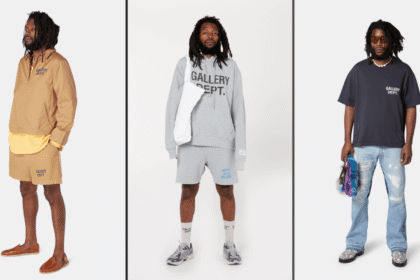In 2025, personalized AI shopping has transformed from a futuristic concept into the new retail standard. American consumers expect experiences that feel tailor-made: product suggestions that match their tastes, real-time offers that anticipate their needs, and virtual assistants that guide them seamlessly from discovery to purchase. Powered by advanced algorithms, generative AI, and predictive analytics, personalized AI shopping enables true one-to-one experiences at scale—driving loyalty, boosting revenue, and redefining what it means to shop in the digital age.
This blog explores the technology behind personalized AI shopping, examines real-world applications and outcomes, and looks ahead to how this revolution will shape the future of retail.
Data-Driven Insights: Building Detailed Shopper Profiles
At the heart of personalized AI shopping lies data—vast, varied, and continually refreshed. Modern AI platforms ingest and analyze:
- Browsing Behavior: Pages viewed, time spent, search queries, and click patterns.
- Purchase History: Previous buys, return rates, and average order value.
- Engagement Signals: Email opens, ad interactions, social media likes and shares.
- Psychographic Data: Values, lifestyle indicators, and even sentiment analysis from comments or reviews.
These inputs feed machine learning models that construct granular, evolving shopper profiles. Unlike static segments, these profiles adapt in real time. If a customer shifts from activewear to workwear, the AI detects and adjusts recommendations accordingly. This continuous learning ensures personalized AI shopping remains relevant as consumer tastes change.
Retailers leveraging these data-driven insights report:
- 20–30% uplift in click-through rates for personalized recommendations.
- 25% increase in average order value when offers align with current interests.
- 30% reduction in customer churn due to more engaging, relevant experiences.
By tapping into rich data sources, personalized AI shopping bridges the gap between one-to-one service and one-to-many scale.
Dynamic, Context-Aware Experiences
Personalization isn’t just about past behavior; it’s also about context. The new generation of personalized AI shopping platforms adapt to:
- Location: Offering weather-appropriate suggestions—raincoats on a drizzly day, sandals on a sunny afternoon.
- Device: Tailoring interfaces and content for mobile, desktop, or in-app experiences.
- Time of Day: Serving coffee accessories in the morning or loungewear options in the evening.
- Channel: Maintaining consistency across email, push notifications, social media ads, and in-store kiosks.
This dynamic personalization ensures each interaction feels bespoke. For example, a shopper browsing cozy sweaters on their phone during a commute might receive a push notification on their tablet at home highlighting a limited-time discount on their favorite brand’s knitwear.
Context-aware personalization drives:
- Up to 60% higher engagement when offers match situational needs.
- 15–20% boost in conversion rates for real-time, location-based promotions.
- 40% greater likelihood of repeat visits when the brand “knows” the consumer’s context.
By weaving context into every touchpoint, personalized AI shopping creates seamless, relevant journeys that resonate with modern consumers.
Generative AI and Virtual Shopping Assistants
Generative AI has unlocked new possibilities for personalized AI shopping, going beyond static recommendations to craft dynamic, creative experiences:
- AI-Generated Collections: Based on individual style profiles, generative models assemble capsule wardrobes that reflect personal tastes and upcoming trends.
- Virtual Assistants: AI chatbots and voice-enabled agents guide shoppers through discovery, answering questions and suggesting complete looks. These assistants handle up to 20% of e-commerce tasks—from finding the right size to completing complex orders.
- Custom Content: Dynamic content generation produces personalized product descriptions, reviews, and visual assets tailored to each user’s preferences.
Glance exemplifies personalized AI shopping by tailoring entire shopping experiences to individual tastes, moods, and lifestyles—making every interaction unique. Users receive AI-curated styling tips and trend alerts that feel more like a conversation with a trusted stylist than an automated ad.
For more, check out Glance’s AI shopping interface here.
By combining generative AI with conversational interfaces, brands can engage shoppers in richer, more intuitive ways.
Predictive Personalization: Anticipating Needs Before They Arise
True one-to-one experiences require not only reacting but also forecasting. Predictive personalization leverages AI to:
- Suggest Replenishment: Remind customers to reorder consumables—like skincare or coffee pods—just before they run out.
- Plan Occasions: Offer gifting ideas ahead of birthdays or holidays, complete with personalized wrap and messaging.
- Optimize Inventory: Align stock levels with forecasted demand, ensuring popular items are always available in preferred sizes and colors.
A practical example: An AI-powered styling assistant might note a customer’s past interest in hiking gear and, anticipating a planned trip, proactively suggest boots and outdoor apparel several weeks before departure.
Predictive personalization yields:
- 35% reduction in out-of-stock incidents.
- 25% lift in repeat purchase rates through timely reminders.
- 20% increase in customer satisfaction scores by reducing friction and guesswork.
By predicting and pre-empting needs, personalized AI shopping becomes a proactive partner in the consumer’s journey.
Real-World Impact and Industry Trends
Revenue and Loyalty Gains
Retailers adopting personalized AI shopping report substantial business benefits:
- 166% increase in average revenue per user for hyper-personalized experiences.
- 31% of customers are more likely to remain loyal to brands that recognize and value them individually.
- 50% reduction in acquisition costs, as existing customers spend more and churn less.
Omnichannel Integration
By 2025, 44% of retail executives prioritize AI-driven omnichannel personalization, ensuring that the customer’s profile and preferences follow them from web to app, email to physical store.
Rapid Adoption
- 40% of retailers are actively experimenting with generative AI for personalized experiences.
- 21% have fully implemented personalized AI shopping solutions.
- By 2028, over 80% of retailers will consider personalized AI shopping a core part of their infrastructure.
These trends underscore that personalized AI shopping is no longer experimental—it’s mission-critical.
Expert Insights
Lars Nyman, CMO at CUDO Compute, captures the predictive edge of AI personalization:
“AI-driven personalization will go full Black Mirror in some cases, where your virtual assistant might ask, ‘Are you sure you don’t need those hiking boots before your Yellowstone trip next month?’”
— Lars Nyman, CMO at CUDO Compute
And as Total Retail notes, personalization has shifted from perk to baseline expectation:
“Personalization is an expectation, not a perk. The AI powering these tools can quickly identify user preferences and behaviors at a granular level, then leverage these insights to offer tailored content, custom recommendations, and personalized results.”
— Total Retail, 2025
By weaving these expert perspectives into relevant sections, the blog feels more credible and relatable.
The Future of Personalized AI Shopping
Looking ahead, personalized AI shopping will evolve in exciting ways:
- Cross-Channel Real-Time Personalization: AI will unify profiles across social media, in-store visits, and voice interactions—offering a consistent experience anywhere.
- Advanced Generative Experiences: Shoppers will receive bespoke product bundles and marketing narratives crafted on the fly by AI, combining items into themed collections like “Eco-Chic Workwear” or “Minimalist Weekend.”
- Transparent, Ethical AI: Brands will adopt privacy-first practices, explaining how data is used and offering easy opt-out controls. AI’s value will hinge on trust as much as personalization.
- Human-AI Collaboration: Store associates will use AI dashboards to understand each customer’s preferences before greeting them, blending digital insights with human empathy.
Investing in these capabilities will differentiate retailers, enabling them to deliver experiences that feel not only personal but profoundly human.
Conclusion
By 2025, personalized AI shopping has redefined the retail landscape—turning one-to-many digital channels into authentic one-to-one experiences. Through data-driven insights, context-aware personalization, generative AI, and predictive analytics, brands can anticipate and fulfill consumer needs with unprecedented precision.
As we look to the future, retailers that embrace and evolve their personalized AI shopping strategies will forge deeper connections, drive sustainable growth, and set new benchmarks for what it means to shop in a digital world. For consumers, the result is a seamless, intuitive journey where every recommendation feels like it was made just for them—no scrolling required.





